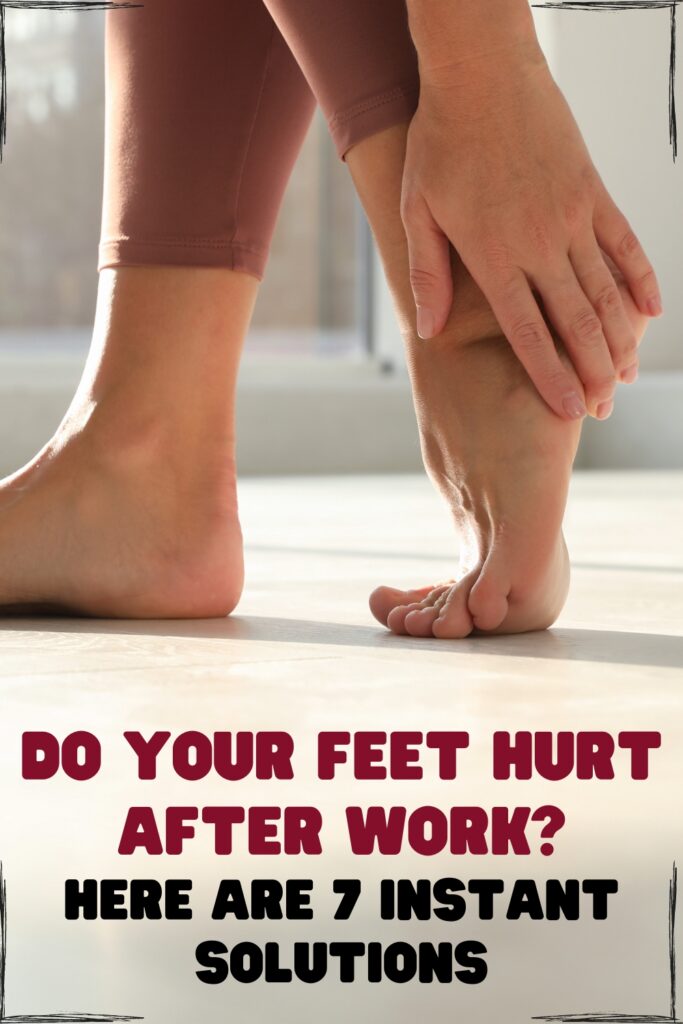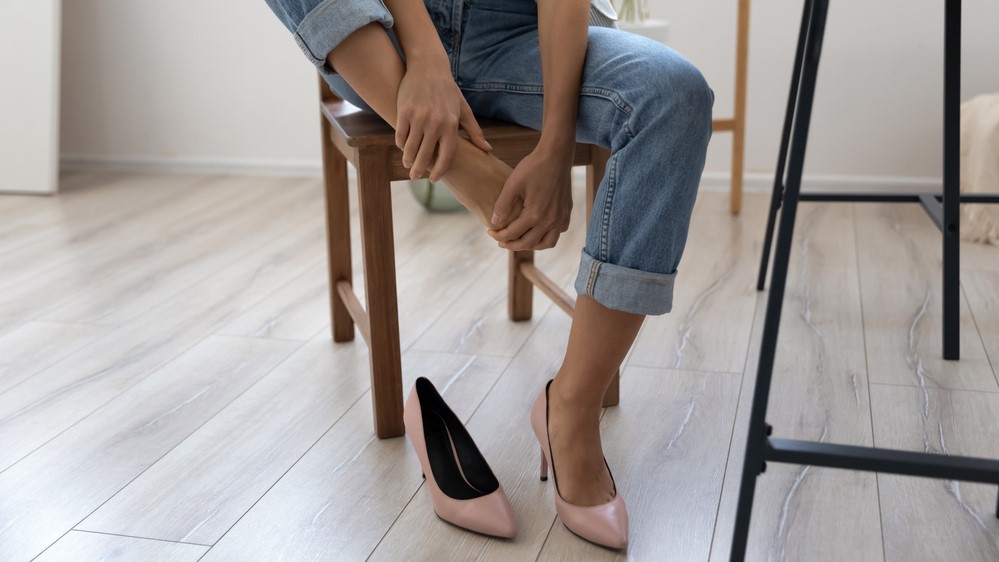There’s no better feeling than to come home after a long, hard day at work, take off your shoes, and just lie down for a couple of minutes, doing nothing. Especially if your legs and feet are aching. However, sometimes when your feet hurt after work, you do have to do a bit more than just lie down.
Because that pain is literally unbearable!
Standing on your feet and overworking them can be detrimental not only to them but to the rest of your body. I remember my mom always used to tell me how everything begins from the soles of my feet – every cold and every back pain.
And as I’m getting older and older, I’m realizing that’s actually true. Our feet are the foundations of our body, and we need to take extra care of them.
So, today, we are going to unravel the main culprits of foot aches and see what can we do to kiss the pain goodbye.
Why do your feet hurt after work? 5 possible reasons
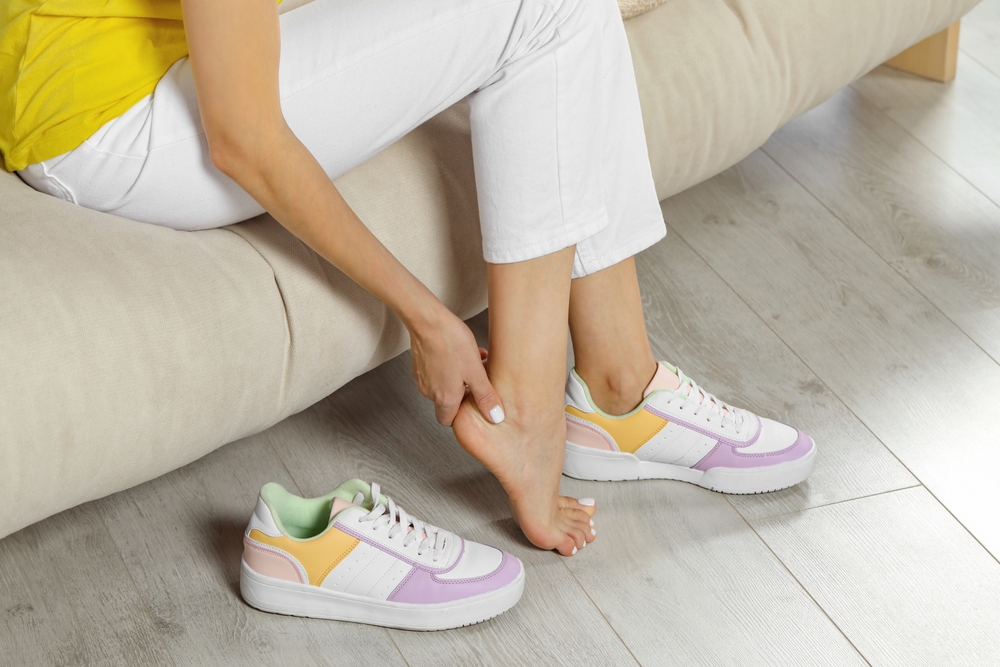
Before we delve into how you can relieve the pain after being on your feet all day, we first have to determine the origin of that pain. Where does it come from? Why does it happen? And does it affect the rest of your body?
Well, here are 5 possible reasons that can clarify this whole situation for us.
1. You’re standing on hard surfaces all day
Any type of hard surface, like concrete or tiles, for example, can be a true nemesis to your feet. If your job requires you to stand all day on those types of floors, your body will absorb all the energy from the ground through your feet, impacting your ankles, knees, hips, and back.
So, not only will your poor feet feel the pain, but also the rest of your body. Isn’t that the epitome of unfairness?
2. The foot pressure isn’t evenly distributed
Don’t know about you, but I never put much thought into the distribution of the pressure from my body. I always thought it was evenly placed on my feet, where both feet equally contribute to its bearing.
Well, I was very wrong. Because for most people, usually one leg does the majority of the work and deals with significantly more weight than the other.
That pressure is especially hard on certain joints of that suffering leg, which is always an express ticket to long-lasting foot pain and even a predisposition to certain injuries.
I suggest paying attention to how you’re standing during your work hours. Are you naturally and subconsciously leaning more on one leg as opposed to the other? Do you notice you bear more weight on the outsides of your feet?
If this is the case, then you’re probably dealing with foot supination, which makes you more prone to developing other painful foot conditions like medial tibial stress syndrome, plantar fasciitis, and Achilles tendinopathy.
3. Your feet aren’t properly supported

When you’re standing on hard surfaces all day, and your feet are struggling to bear the weight of your body, it’s only natural to assume that at the end of the day, your feet will hurt. Especially if they’re not properly supported.
Shoes with the right amount of support for your specific needs are always well-cushioned, especially at the usual pressure points of your feet where you feel the most pain, like the balls of your feet, heels, or arches.
So, if your work shoes don’t support your feet, that’s why you feel the pain after work.
4. You have problems with circulation
Believe it or not, circulation can be another reason your feet are in pain every day. The blood and other fluids in your body are supposed to continuously flow up and down your legs and through the rest of your body.
However, if you’re standing all day, you’re actually creating circulation problems, which results in the swelling of your feet and legs in general. It can also create varicose veins and other vein-related issues.
5. You suffer from other foot-related conditions
And of course, your feet may hurt after work due to an already-existing foot-related condition, such as plantar fasciitis, hammertoe, heel spur, ingrown toenail, stone bruise, and others.
How can you relieve the pain? 7 instant solutions
Now that we know why your feet hurt after working long hours, it’s finally time to reveal 7 efficient and useful ways you can alleviate that pain. So, without further ado, let’s jump right into it!
1. Get a foot massage
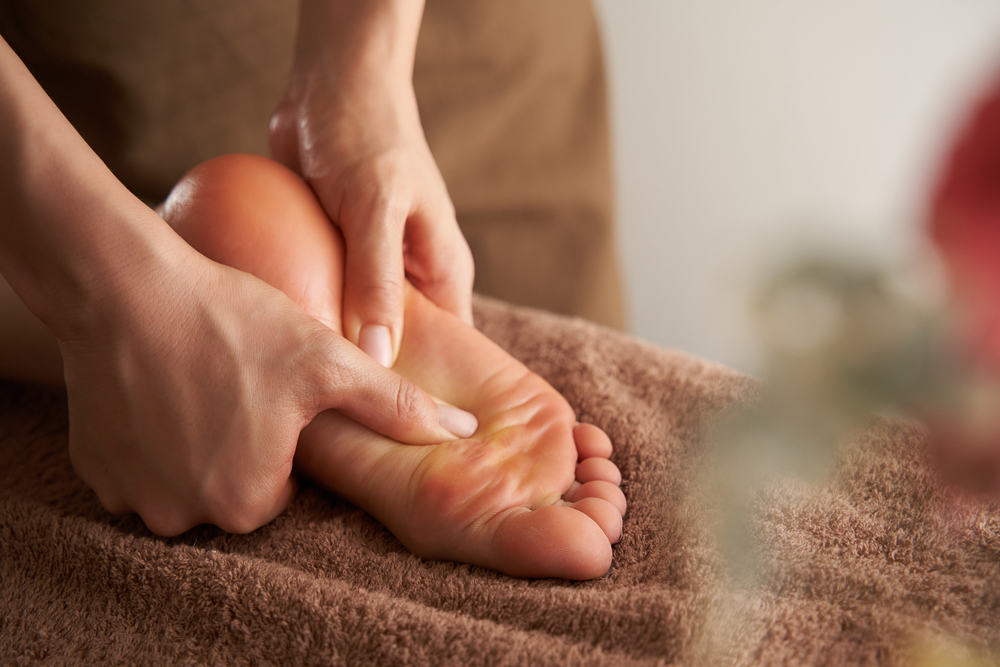
There’s nothing better than getting a massage, right? It’s so relaxing, calming, and a bit painful, but definitely pain relieving.
If you’re someone who loves to go for back massages regularly, why not ask for a foot massage, too? Massaging your feet can help with muscle soreness, and can drastically improve your circulation.
So, next time you’re in a salon, make sure you ask for a foot massage. Or if you don’t like your feet to be touched by strangers, you can always ask your significant other to do it.
Or just do it yourself! Prop one leg on the opposite thigh, take some lotion or body oil, and start by kneading your soles. As you go, slowly apply pressure to the most painful parts of your feet. And always make sure to bend your toes and massage them, so they don’t get stiff.
2. Ice the painful area
Putting ice on any inflamed muscle in your body can be very relieving. It can do wonders for your overworked feet, too.
You can easily ice your feet by placing an ice pack on the painful area and holding it there for anywhere between 5 and 15 minutes. If you struggle to endure the coldness, remove the ice pack, let your foot return to its normal temperature, and then apply the pack again.
Or, you can simply make an ice bath for your feet. Pour some cold water into a large bucket and add several cubes of ice. Then soak your feet for around 20 minutes, and enjoy this relaxing time as your feet become less and less sore.
3. Make Epsom salt bath

Another thing you can do for your poor feet is an Epsom salt bath. Epsom salt is one of many natural cures for inflammation. It is usually used to relax muscles and alleviate pain in the shoulders, neck, and even skull.
To prepare an Epsom salt bath, take a large bucket and fill it with warm water, enough to cover your ankles, and add three-quarters of a cup of Epsom salt. Stir well, and then soak your feet in the mixture for 20 to 30 minutes.
You can do this bath once or twice per week, not more, as it can seriously dry out your feet. After you’re done, always make sure to moisturize your feet.
4. Do stretches and exercises regularly to strengthen your feet
If your feet hurt after work, it might be because you don’t stretch your legs or exercise regularly. Hate to break it to you, but your twelve-hour shift at the hospital doesn’t count as exercise.
When you spent the majority of the day on your feet, of course they will feel sore in the evening. But to make them stronger and less prone to soreness, you have to regularly train them with various foot-related stretches and exercises.
One of the exercises you can do is a big toe stretch. This stretch can help alleviate the pain you feel after a long day of wearing your work shoes. It can also improve the mobility and flexibility of your feet.
You can do this stretch by sitting straight up in a chair and placing one foot on the opposite thigh. With your fingers, apply gentle pressure and stretch your big toe both up, and down, and left and right, keeping the toe in each position for a couple of seconds.
After repeating this several times, you then switch to the other leg.
Another great exercise you can do is attempting to pick things up with your toes. You can use pencils, marbles, or any other small item in your home. The exercise is done by picking up those items and placing them elsewhere. Pretty simple, but highly effective.
5. Wear the right type of footwear
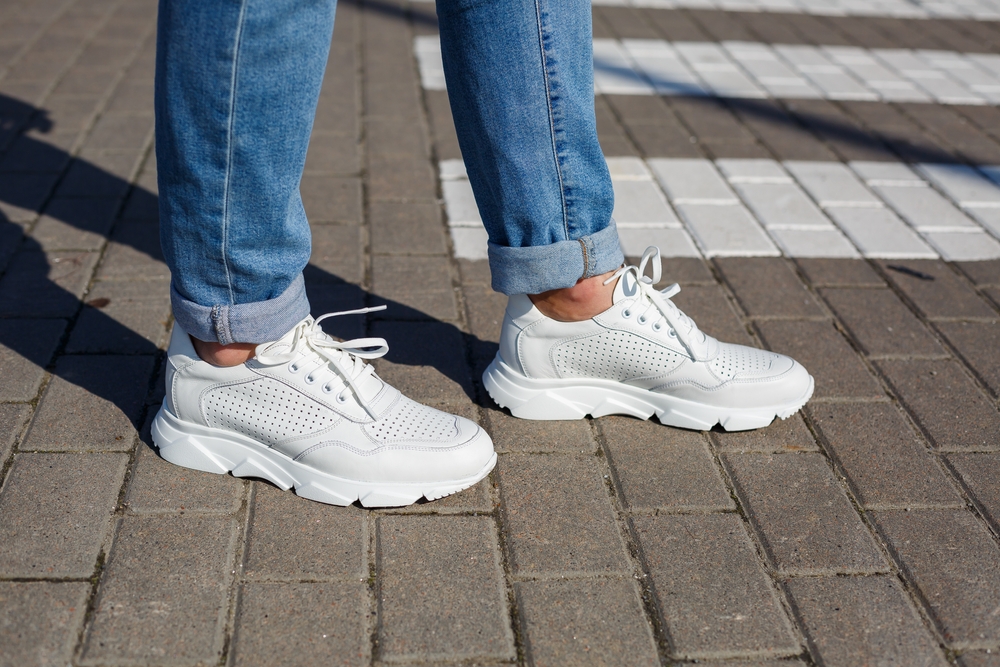
To get rid of the foot pain, or rather prevent it altogether, you simply have to invest in a good pair of work shoes.
Depending on your job description and work environment, you’ll get the shoes that fit your needs perfectly. For example, if you’re working on a construction site, and you’re constantly walking on hard concrete floors, you’ll need a good pair of work boots suitable for concrete and masonry.
It’s important that the footwear you opt for is supportive, comfortable, protective, and definitely not overly heavy.
6. Wear compression socks
Compression socks can also be an exceptionally useful and effective way of getting rid of foot pain. Wearing them offers a lot of benefits, like:
- reducing swelling in ankles and legs in general
- boosting blood circulation
- improving lymphatic drainage
- reducing vein-related pain, etc.
If your job requires you to stand long hours, then compression socks could become your new besties.
7. Elevate your feet whenever you have a chance
And lastly, to reduce the swelling in your legs and get rid of foot pain, make sure to elevate your legs whenever you can. It can be during your break, or back at home – it doesn’t matter!
Prop your legs against a wall and remain in that position for a couple of minutes. This seemingly insignificant movement will do wonders for your precious feet.
Read more: How To Prevent Shoes From Cutting Ankles? 11 Effective Tips
